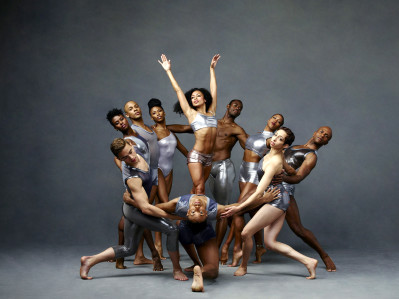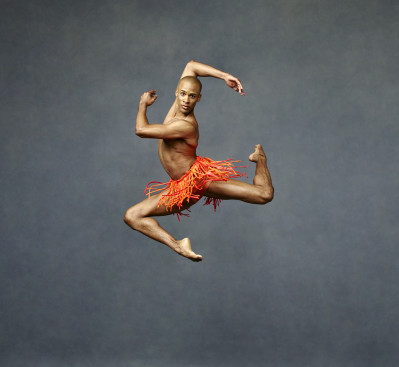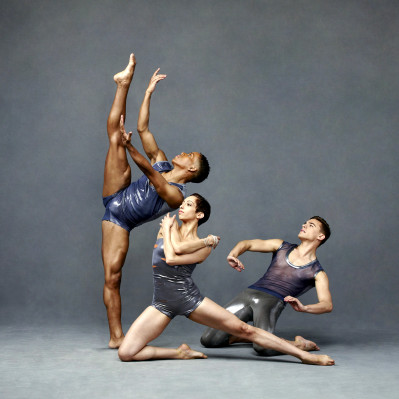REVIEW: Alvin Ailey American Dance Theater celebrates tradition, forges path forward

NEW YORK — Alvin Ailey American Dance Theater is unique among modern-dance companies in so many ways. Their uncanny ability to simultaneously celebrate their history and expose audiences to new choreographers and routines is both exhilarating and necessary. The combined legacy of Ailey; the company’s second artistic director, Judith Jamison; and current artistic director, Robert Battle, are on wonderful display, drawing one continuous line of dance dominance over 50 years.
At a recent performance of Alvin Ailey American Dance Theater at City Center in Manhattan, N.Y., the company showcased four powerful, diverse works that spoke to the dancers’ versatility and skill level.
“Toccata” opened the two-hour program. With choreography by Talley Beatty, the piece dates back to the 1960s and is part of a longer work called Come and Get the Beauty of It Hot. What first stands out among many of the company’s routines is the infectious music and how it melds with the movement on stage. For “Toccata,” the jazzy rhythms of Argentine composer Lalo Schifrin help add energy to the dozen or so dancers on the stage. The steps were intricate; the moves were infectious. Everyone brought flexibility and freedom to the fiery performance, lasting approximately 10 minutes. Hope Boykin, who has been with the company for 15 years, stood out among the many performers.

“Cry,” the iconic work once danced by Jamison, originated in 1971 and features choreography from Ailey. This season at City Center is a celebration of Jamison’s 50 years with Alvin Ailey American Dance Theater. “Cry” is a fitting tribute to both the namesake of the company and the current artistic director emerita. The sole female dancer combines a variety of moves across three sections of the 15-minute piece. The accompanying music includes “Something About John Coltrane,” “Been on a Train” and “Right On, Be Free.” The signature piece, much like “Revelations,” defines the expansive and all-encompassing mission of Alvin Ailey American Dance Theater. By exposing audience members to modern dance, and interpreting the African-American cultural experience, new ideas are combined with historical narratives into one unifying message. The thesis is played out on the performers’ steps, spins and bounding leaps across the stage.
“Cry” has been restaged by Ailey Associate Artistic Director Masazumi Chaya, a mainstay of the company, with additional coaching by Jamison and Donna Wood Sanders. It is dedicated to “all Black women everywhere — especially our mothers.” Only a few people have danced “Cry,” including Jacqueline Green, a current company member.

The middle portion of the program included “Uprising,” choreographed by Hofesh Shechter. This stark and aggressive piece is accompanied by a militaristic, industrial soundscape by Schechter and Vex’d. The volume is so loud on the percussion sounds that when the pounding ends, a strong emphasis is drawn to the stage, where seven male dancers enter and exit the spotlight. They lean on one another; they fight with one another. They dedicate themselves and give up, and start all over again.
The piece was perhaps the strongest part of the program, even though it was the one dance that felt completely different than the others. Again, that’s a welcome attribute of the Ailey repertory. One intermission or momentary pause can work wonders of variance. As the lights go on, the audience members find themselves taken to a different exercise in movement, song and pacing.
Finishing the program, like so many of Alvin Ailey American Dance Theater’s performances, was “Revelations,” the most memorable and crowd-pleasing routine of anything else in the repertory. Some audience members, this one included, have memorized not only the different sections and songs, but much of the solemn and eventually energetic choreography. It stands as Ailey’s most impressive and influential work, and for good reason.
The three sections — “Pilgrim of Sorrow,” “Take Me to the Water” and “Move, Members, Move” — combine into a stunning portrait of excitement and loss, of possibility and reality. Press notes point to Ailey’s exploration of “the African-American cultural heritage,” and within the span of nearly 40 minutes, audiences follow that exploration. Featuring spirituals and exuberant gospel songs, “Revelations” takes its dancers and the audience on a unique journey.
Some of the recognizable songs in the dance include “Didn’t My Lord Deliver Daniel,” “Wade in the Water” and the rousing finale, “Rocka My Soul in the Bosom of Abraham.” For first-timers and alumni alike, “Revelations” continues to offer so much to think about and appreciate.
By John Soltes / Publisher / John@HollywoodSoapbox.com
- Alvin Ailey American Dance Theater continues its New York winter season at City Center through Sunday, Jan. 3. Click here for more information on tickets.

